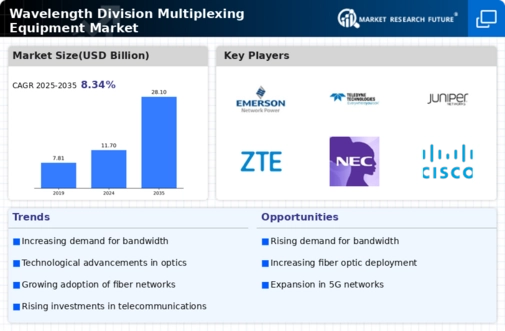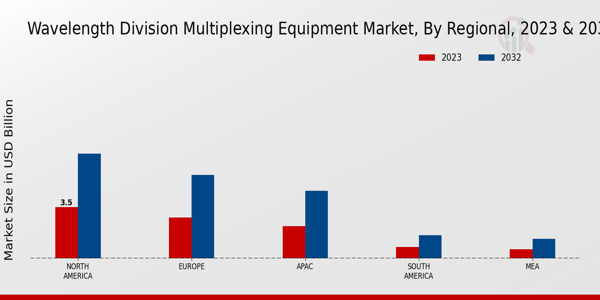The Wavelength Division Multiplexing Equipment Market is witnessing significant advancements, driven by the increasing demand for high-speed data transmission and bandwidth efficiency. This market is characterized by rigorous competition, as various players innovate and develop products that cater to the growing needs of telecommunications and data center operators. In an environment where network congestion and the need for robust infrastructure are becoming ever more critical, companies must focus on enhancing their offerings to capture a larger market share.
Strategic partnerships, mergers, and innovative technological developments play a vital role in shaping the competitive landscape, with firms continuously striving to provide solutions that not only meet customer requirements but also help reduce operational costs.
Emerson Network Power, a key player in the Wavelength Division Multiplexing Equipment Market, holds a strong position due to its comprehensive portfolio of solutions tailored for network optimization and management. The company leverages its robust technological capabilities to facilitate high-capacity networks, thereby enhancing data transmission efficiency across various platforms. Known for its commitment to reliability and performance, Emerson Network Power provides equipment designed to support scalable and flexible infrastructures, appealing to both large enterprises and telecom operators. The organization is recognized for its innovative approaches to heat and power management, which are critical components in supporting high-density networks.
This focus on efficiency and reliability has cemented Emerson Network Power's standing in the competitive landscape of the Wavelength Division Multiplexing market.
Teledyne Technologies is also a significant contender in the Wavelength Division Multiplexing Equipment Market, offering a diverse range of products that cater to the specialized requirements of optical networking. The company is distinguished by its advanced technological solutions, emphasizing innovation in design and application. Teledyne Technologies focuses on research and development, ensuring that it stays ahead of the curve in providing cutting-edge multiplexing equipment. Its strengths lie in developing high-performance technologies that are reliable and optimized for various applications.
By fostering strong relationships with clients and stakeholders, Teledyne Technologies effectively addresses market demands and creates tailored solutions that enhance operational efficiency for data-centric businesses. This proactive approach to responding to customer needs reinforces the company's commitment to maintaining a competitive edge in the Wavelength Division Multiplexing Equipment landscape.















